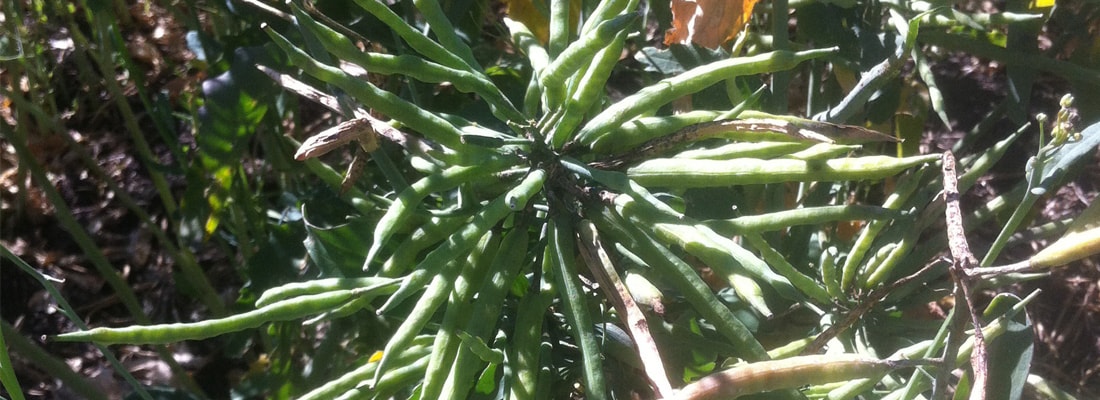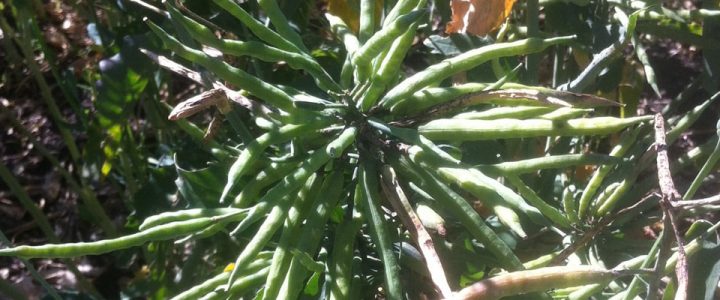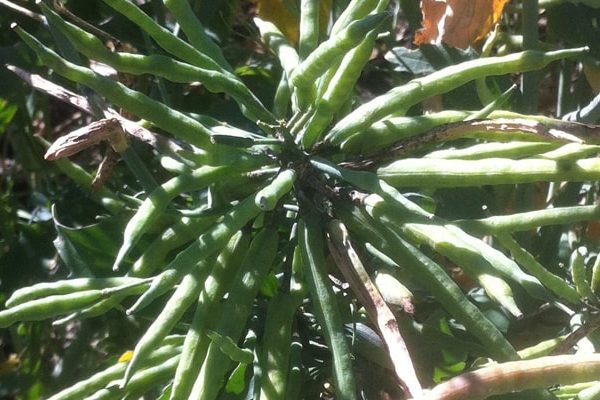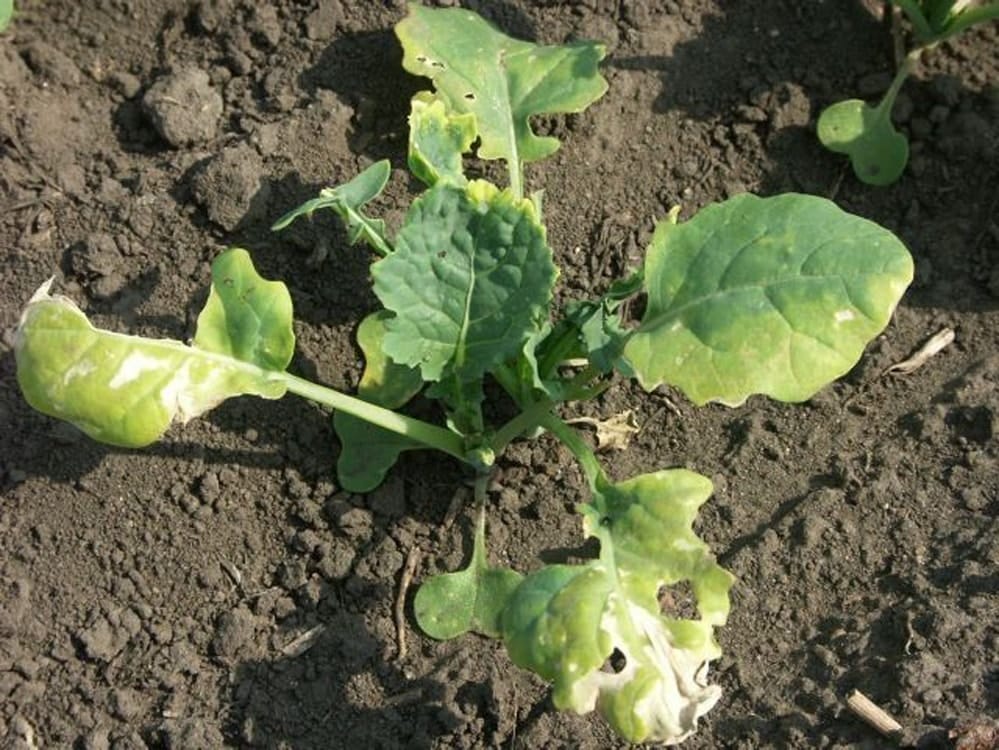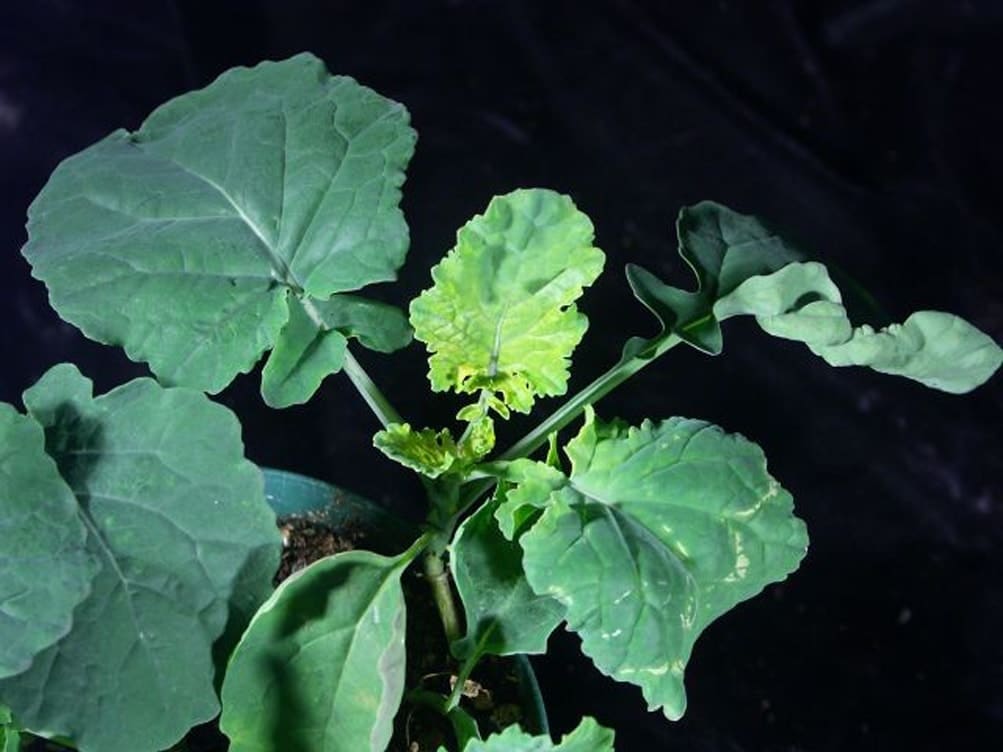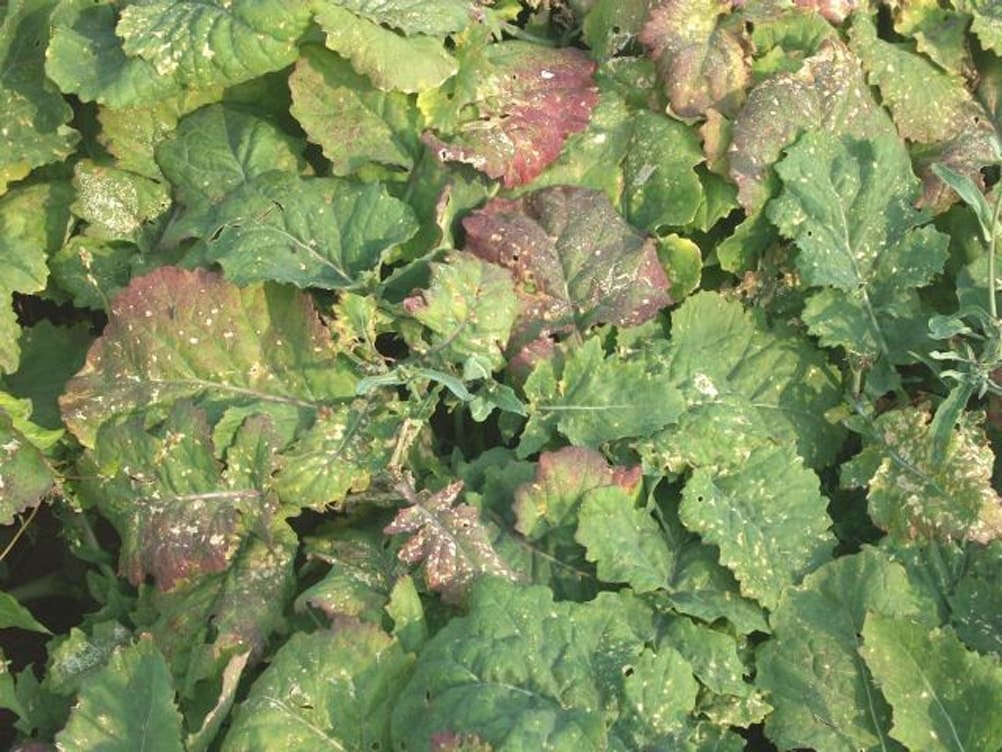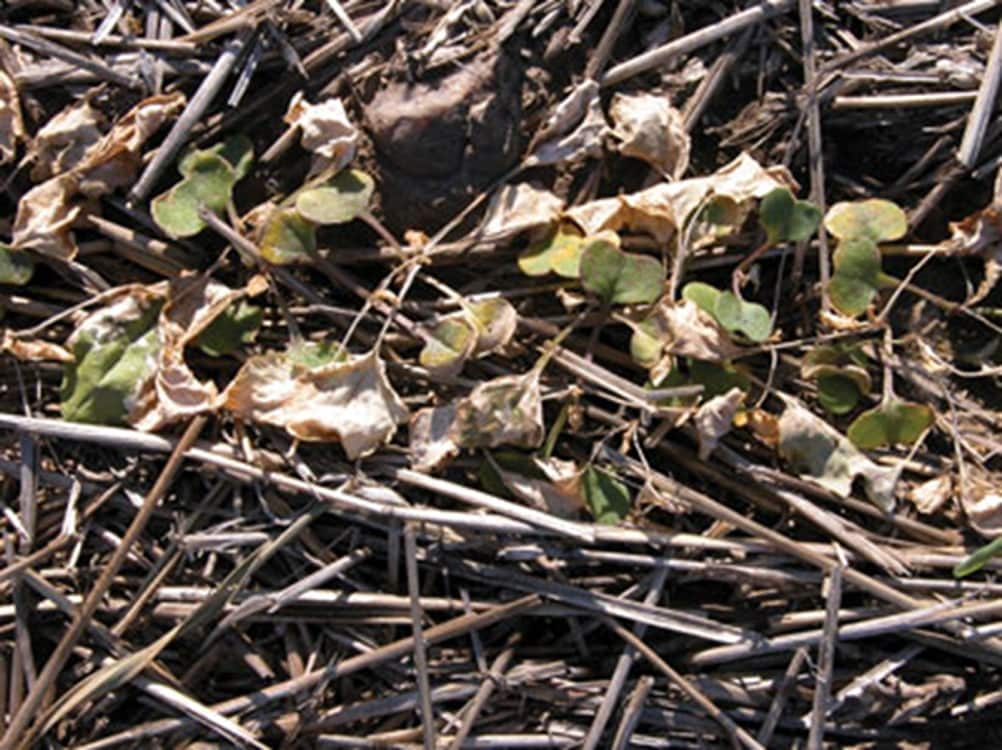Herbicide carryover can cause crop injury ranging from minimal to complete crop loss. Increased acreage of canola and new herbicide options in other rotation crops have created more opportunities for carryover damage. Minimizing risks and being aware of symptoms to properly identify damage to best manage this potential challenge.
Important tips for best management
- Be familiar with herbicide labels and follow crop restrictions.
- Mild symptoms of herbicide injury may be confused with symptoms caused by cold temperatures or nutrient deficiency.
Injury problems have typically arisen where normal breakdown of herbicides has been inhibited by factors such as drought, low organic matter and pH, sometimes in conjunction with increased frequency of use of residual herbicides in the rotation.
Risk and type of crop injury
Herbicide carryover can cause maturity delay and crop injury ranging from minimal to complete crop loss. Injury can occur anywhere in the field and may be patchy. Even within a small area, severity of plant injury can vary from low to high.
Herbicide carryover injury tends to be higher in areas where break down is slower, such as areas of low organic matter, low soil moisture, or high or low pH soils. It also tends to be higher in areas where higher rates were applied in the first place, such as headlands, corners or overspray strips.
When carryover is possible or suspected, check fields at early leaf stages and note symptoms and recovery. Photograph damage and recovery, along with photos of plants that appear unaffected to provide a better visual comparison.
Herbicide carryover injury to canola most often occurs when canola is grown on fields that received a product known to have a carryover risk for canola. Recropping restrictions for all herbicides are listed on labels and in provincial guides to crop protection. Poor record keeping, misunderstanding of labels, or last minute rotation changes are common contributing factors leading to crop damage from herbicide residue. See the Herbicide residue and drift injury section for more information.
The Saskatchewan Ministry of Agriculture produces herbicide carryover risk maps for the province and can be viewed on their Herbicide Residues page.
Recropping restrictions are based on the half-life of an active ingredient. Half-life is a relative measure of how fast chemicals break down in the environment. Specifically, half-life is given as the number of days required for the number of herbicide molecules in the soil to drop by half. The bigger the number, the more persistent an active ingredient tends to be. For example, Group 2 Odyssey is not to be used in the year ahead of canola because imazethapyr (one of two actives in Odyssey) has a half-life of 60 to 90 days and because canola is sensitive to imazethapyr at very low levels. Imazamox, the other active in Odyssey, has a half-life of 20 to 30 days.
Group 2 herbicides, in general, are more likely to carryover at damaging levels because they maintain herbicidal activity at such low doses and can retain that activity over several half-lives. Group 5 products, in comparison, lose herbicidal activity after as little as one half-life.
Herbicide carryover injury can also occur when expected herbicide breakdown does not occur.
Pace of herbicide breakdown
Factors that can slow the pace of herbicide breakdown are:
- Soil characteristics – Interactions between soil factors are complex and may either decrease the rate of herbicide decomposition or increase the availability of remaining herbicide residue to the crop.
- Organic matter and soil texture – Soil organic matter, while not directly related to breakdown, is a large factor in whether crops will be injured from soil residues. Soil organic matter acts as a buffer to herbicides and will provide additional binding sites for the herbicides to stick to, keeping them away from susceptible crop roots. Soil organic matter content is also a good indicator of micro-floral activity. Soil with higher organic matter provides additional food sources for the microbes that break down herbicides, reducing the risk of carryover damage. As organic matter decreases, microbial degradation of the herbicide decreases, increasing potential carryover. Also, soils with low clay content have decreased adsorptionThe process of electrical attraction that holds cations to negative surfaces of soil colloids. More of residual herbicides, thereby increasing potential carryover. Potential for injury on subsequent canola crops increases as organic matter decreases, and clay content decreases.
- Soil pH – Some products bind strongly to soil particles at one pH extreme and are relatively free at the other extreme. Group 2, 5 and 14 products have this characteristic. For example, imidazolinone break down will be slower in acidic (pH below 6) soils with low organic matter. Sulfonylurea break down will be slower in alkaline (pH above 7.5) soils with low organic matter.
- Climate – Drought, excess moisture and cool temperatures can all slow the breakdown of herbicide residues. Under drought conditions, microbial and hydrolytic breakdown of herbicides is decreased and adsorptionThe process of electrical attraction that holds cations to negative surfaces of soil colloids. More of herbicide to soil particles is increased. The influence of drought on soil may override any previously favourable pH or organic matter conditions. Too much water can also increase carryover for molecules that rely on microbial break down. Most of the microbes that break down herbicides are aerobic (oxygen-loving), and if fields are saturated or flooded, oxygen is used up in those soils and the microbes that break down herbicides do not function. It may also take a bit of time for populations of microbes to build up again after soils have dried to the point where they will have any impact on the herbicides in the soils. Cool soil temperatures are a factor for active ingredients that rely on microbial decomposition (e.g. imidazolinones), because they reduce microbial activity.
- Soil moisture – Several products with high carryover risk are broken down almost exclusively through hydrolysis- the process of water splitting the herbicide molecule in two. Dry soils result in limited break down of these products. With ample water, they can break down very quickly. This is why certain herbicides caution producers about leaving the mixed product in the spray tank for an extended period as the water carrier will break down the herbicide in short order. Even those products that break down by microbial action will require some soil moisture, since microbes need water to live.
Severity of herbicide carryover injury
Mild herbicide carryover symptoms:
- Minimal or no damage to the meristem, but early leaf development is stunted.
- Maturity delay. Injured plants will start to lag healthy plants.
- Mild chlorosis noticeable on the first and second leaves.
- Reduced leaf area and mild cupping of the third leaf, but in mild cases, the plant may growth through this setback, and look normal after a couple weeks.
- Elongated petioles.
- Mild symptoms of herbicide injury may be confused with symptoms caused by cold temperatures or nutrient deficiency. For this reason, mild injury may not produce sufficient symptoms for definite diagnosis until the three-leaf stage.
Severe herbicide carryover symptoms:
- Meristem damage that may result in poor recovery and subsequent maturity delay, yield loss or plant death.
- Early and long lasting purpling or chlorosis. Some leaves may look translucent.
- Cupping of leaves.
- Severe injury is not mimicked by nutrient, insect or disease injury symptoms.
- Minimal first leaf and subsequent leaves can be stunted.
- Very slow recovery. If a plant recovers, it can take weeks.
- Heavy meristem damage can cause premature growth of side branches.
- If injury persists, plants may produce colorless leaf buds and may not flower.
There are different symptoms for the different herbicide groups. Herbicide carryover can be confirmed by:
- Weather reports to determine if weather conditions since application were conducive to carryover, or whether environmental stresses like cold stress may have contributed to symptoms that could be mistaken for herbicide injury.
- Soil tests to confirm available nutrient content in the soil.
- Soil tests for the presence of herbicide residue by bioassay, chemical analysis or both.
Cold stress symptoms arise only after a cold temperature event, and recovery will be rapid as temperatures increase. Severe injury symptoms such as purpling or chlorosis, severe size reduction or thickening of cotyledon leaves and petioles often appear at the cotyledon stage. However, cotyledon symptoms must be verified by damage to true leaves and/or meristems to eliminate cold stress as a cause for symptoms. If cotyledon symptoms carry on to true leaf injury, this is a sign of herbicide carryover damage. Cold stress symptoms also tend to be fairly general throughout an area, whereas herbicide carryover can vary from plant to plant.
Nutrient stress symptoms are extremely unlikely to occur at the cotyledon stage as nutrient demands are low. Nutrient stresses show up later, often after the risk of herbicide carryover has passed. Herbicide carryover symptoms seldom appear at later leaf stages. A soil test can determine nutrient availability.
Carryover issues for crops following canola. For pulses following canola, the carryover issues for the pulses would be if clopyralid (Lontrel) has been used on the canola. Peas and other pulse crops are very sensitive to clopyralid and caution should be used, particularly if using higher rates and if conditions are dry. If peas are following Clearfield canola, IMIs used in pulses will not control Clearfield canola volunteers. In that case, the IMIs would have to be used with a tank mixCombining two or more crop protection products (that are compatible) in one application. More.
Herbicide stacking
Saskatchewan field experiments from 2002-2005 found that canola yields can be reduced by the stacking of Group 2 herbicide residues. Stacking is defined as the repeated application of different residual herbicides which results in additive or synergistic phytotoxicity to rotational crops.
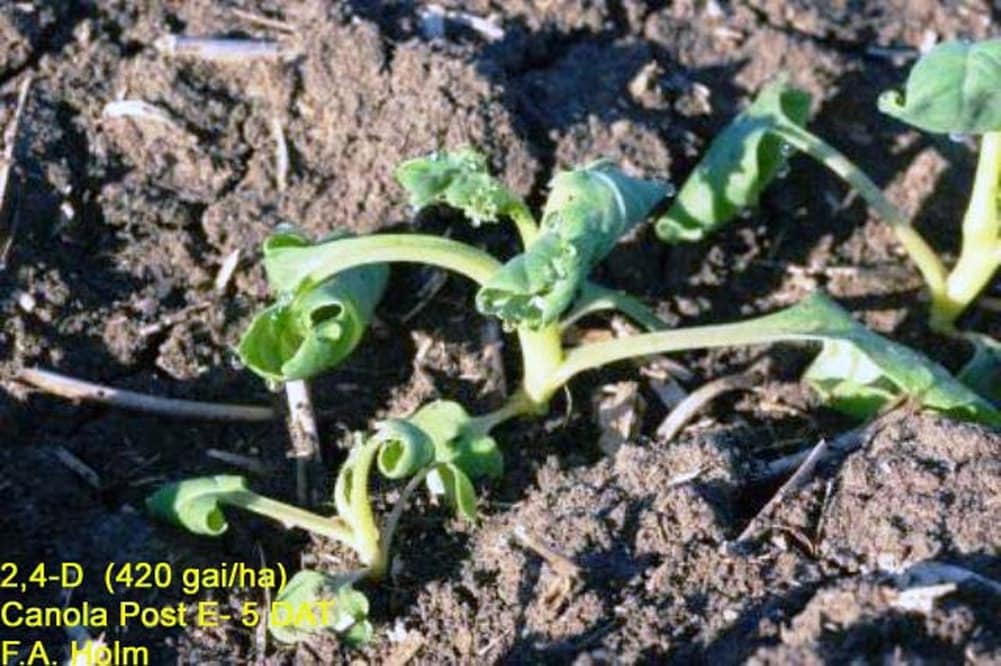
The first of two experiments followed a wheat-field pea-cereal (barley/wheat split)-canola sequence. Stacking of Assert-Odyssey and Assert-Sundance through the cereals and pulses in rotation caused residual injury in the fourth year canola crop but no yield reductions were recorded.
The second experiment followed a pea-wheat-canola (Roundup ready and Clearfield split) sequence. Application of Odyssey to field pea and then Assert or Sundance to wheat resulted in synergistic phytotoxicity and yield reductions to Roundup Ready canola at two of two studies conducted at Scott, one of two studies conducted at Melfort and one study conducted at Vanscoy.
Risk of Group 2 herbicide stacking appears to be highest in lighter textured soils that receive below normal precipitation.
Sequences that involve Odyssey and Assert (Sundance is no longer available) appear to be the highest risk 1.
Additive or synergistic impact
Additive injury between two or more residual herbicides occurs when the combined injury from their application is equal to the predicted injury if the herbicides are applied individually. Synergistic injury occurs when the combined injury is greater than the predicted injury. For example, herbicide A typically results in 40 per cent growth reduction in a sensitive plant, while herbicide B typically results in 60 per cent growth reduction. Using a formula known as Colby’s formula, the predicted injury from the two herbicides applied together is estimated to be 76 per cent. Therefore, if the observed injury from the two herbicides applied together is about 76 per cent, then the injury is additive. However, if the observed injury or growth reduction is 85 per cent the combined application is synergistic 2.
Controlled environment experiments predicted an additive interaction between the residues of Odyssey and the residues of Assert, Everest, Sundance and Frontline. In the field, additive effects of Odyssey and Everest and Odyssey and Frontline were rarely observed; however, the bioassay indicates that it could occur. When stacking in the field occurred, it usually involved Odyssey, Sundance, and/or Assert and the effects were generally synergistic, not additive as predicted by the laboratory bioassays. Therefore, environment must play a role in the crop response to herbicide stacking 1.
